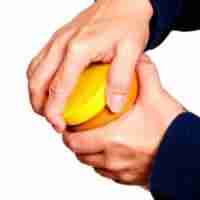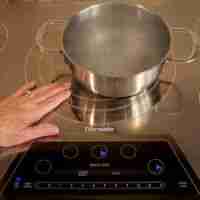How to open a jar without a jar opener. If you’re not in the mood to go out, there’s nothing worse than feeling hungry but not having food that’s easily accessible.
Many of us have probably been in this situation before, opening dozens of drawers trying to locate our stash of emergency snacks-only to find they’re stuck behind something or just plain missing!
Instead of giving in to despair and eating a mystery apple off the top of your bag of products because you’re tired of waiting on yourself, save time by skipping online shopping and finding these ideas right in your kitchen.
How To Open A Jar Without A Jar Opener
We will discuss the methods of opening a jar without a jar opener.
Method 1: Add Some Grip
It would help if you tried to enhance your grasp on a tough jar lid when opening it. This could be due to a slick or a moist cover due to a humid climate.
Using a dry dish towel or even plastic wrap to enhance grip and make it simpler to open jars when dealing with slippery and damp lids is a great approach to improve grip and make it easier to open jars!
Silicone, commonly used in kitchens as an oven-safe or heat-resistant lap cover, can also be used. Finally, if all else fails, slap on some rubber gloves or secure the lid with a thick rubber band until you can get some help from tools like an electric jar opener!
Method 2: Break the Seal
Take it a step further and pry the lid open with the point of a flathead screwdriver inserted under the rim. You might also be able to remove the seal with the help of a wine opener or other handy items!
Make do with what you’ve got and ensure it’s pointed away from your face. It only takes a fraction of a second of pressure before the lid pops off into your palm, so keep moving around the top until it pops straight off into your palm!
Method 3: Submerge it in Boiling Water
You’ve been attempting to open the jar for some time, but no matter what you do, the lid would not budge.
So please don’t waste your time trying alternative strategies, such as increased traction, because they won’t work!
Instead, try the following procedure, which should make it easier to remove your lid: Dip the jar in hot water and carefully run it around the glass container, using the most scalding water from your tap.
Before unscrewing the top, ensure to wet both sides of it with hot water to release any potential dry patches that may be holding it up.
Method 4: Squeeze the Lid
This method is more helpful if you’ve used a lot in one set of lids. For some reason, let’s say there’s a pasta sauce around the rim or under the cover.
You take that lid and tap it on top and around the side of the jar. Then you use either a wooden rolling pin or your kitchen knife to roll along the edge of that jar, opening and loosening it further once it has been reduced sufficiently.
FAQs
Why does hitting a jar open it?
Opening a jar that has its contents tightly packed together can be quite difficult. But there is a trick to getting it open without damaging the lid.
All you have to do is smack the underside of the rim in such a way that the side’s shifting weight causes the contents to expand into a heap on top of the lid. After that, you can easily shift your fingers underneath and pry it off with ease.
Why are pickle jars so hard to open?
As your soup cools, the pressure of the air left inside the jar falls, making you more reluctant to open it up.
The greater the atmospheric pressure outside makes it harder to escape because the inner lid gets held down by the weight of the air pressure pushing back against you, resulting in an increased difficulty which can force one to seek alternative methods of opening.
Conclusion
Some methods for getting food out of your jar are dangerous. These include breaking the seal with heat or tools, which might result in you burning yourself or injuring yourself if you are not careful. If feasible, rip around the top of the lid rather than pulling from the middle to reduce the chances of breaking a piece of glass flying into your meal when removing the seal. Because of the sharp edges and slickness of the plastic, it’s important not to leave the ring on a portion of your food after you’ve opened it.
Related Guides




